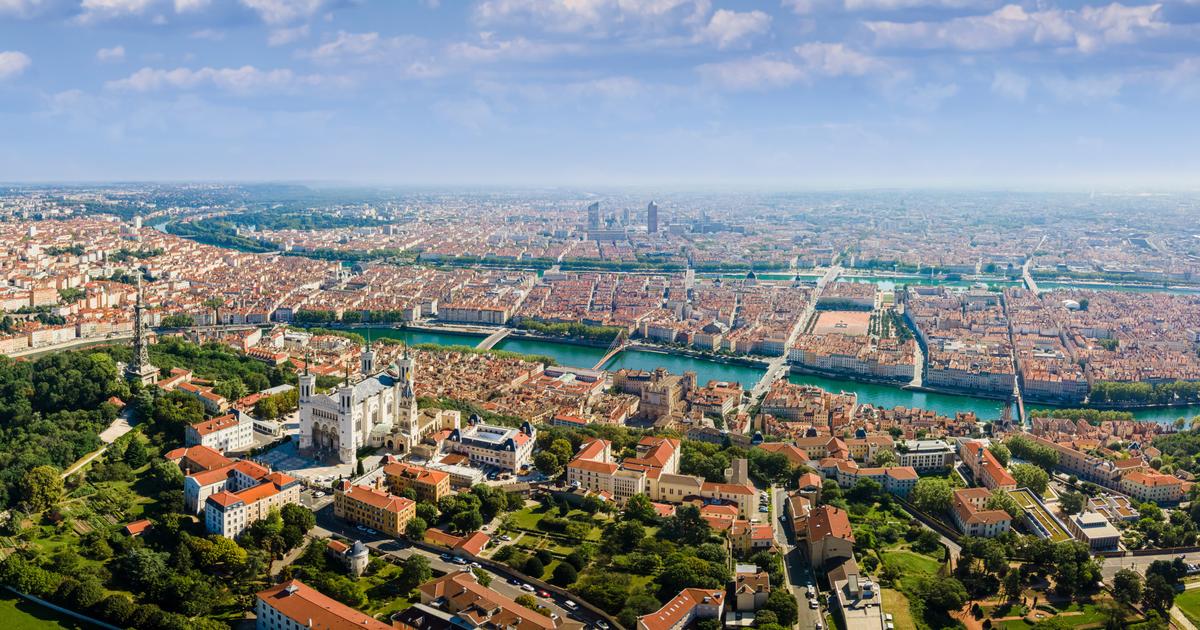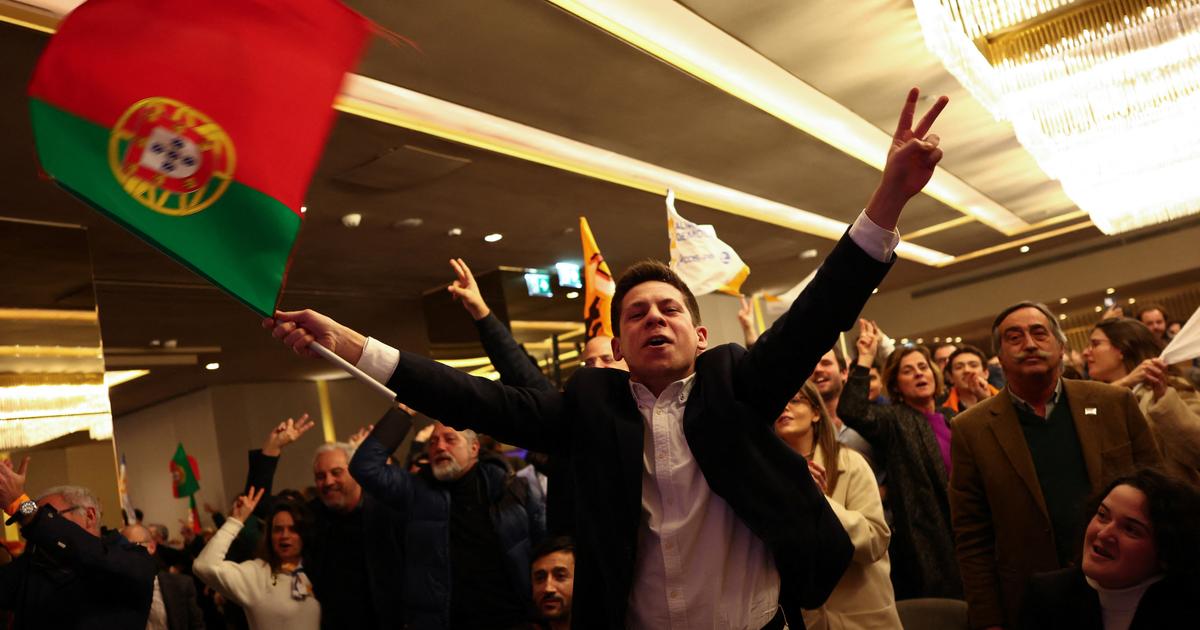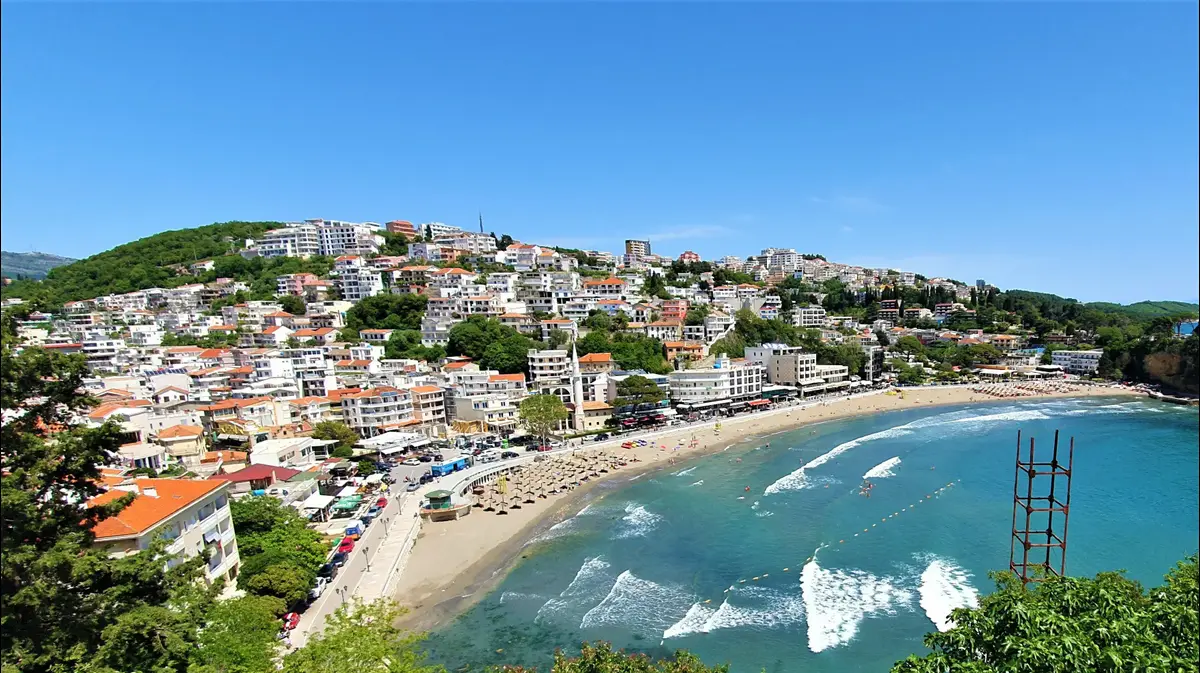Montenegro: history, politics, population and geography
Created: 05/03/2022Updated: 05/03/2022 15:45
Saborni Hram Hristovog Vaskrsenja in Podgorica, Montenegro © IMAGO / Westend61
Montenegro is a country of contrasts.
The landscape is determined by Mediterranean coastal beaches to impassable mountain ranges inland.
Also, due to its history, it is home to different ethnic groups.
Montenegro was once part of the state of Yugoslavia.
In addition to Montenegrin, Serbian, Bosnian, Albanian and Croatian are also spoken.
Although the state is not a member of the EU, it still uses the euro as a means of payment.
Podgorica – With an area of 13,812 square kilometers and a population of around 622,000 people, Montenegro is one of the smaller countries in Europe.
Although the state is smaller than the federal state of Schleswig-Holstein, it has three climate zones – and also the rainiest place on the continent.
Due to its checkered history, several ethnic groups, languages and religions coexist here.
Nevertheless, the country also has its own identity.
Montenegro: From antiquity to the prince bishopric
Already in ancient times, tribes of the Illyrians, Dacians and Thracians, who had been pushed out by the Romans in the third century BC, settled here.
Towards the end of the fourth century, Montenegro passed to the Byzantine Empire with the partition of the Roman Empire.
As a result, the influence of the Orthodox Church grew steadily.
From the sixth century more and more Serbs, Croats and Slovenes immigrated to the Balkan region.
In the 15th century, a new heyday developed under Ivan Crnojevic, who also went down in the history of the country as Black Ivan.
He fought successfully against the Ottomans and also contributed to the country's technological advancement.
The church was also strengthened under his reign, so that Montenegro as a prince bishopric was under the influence of various bishops.
During this time, the small state was getting closer and closer to Russia.
Montenegro: Principality, kingdom and constituent state of Yugoslavia
In 1852 Montenegro became a principality.
Prince Nikola I was able to defeat the Ottoman rule by 1878.
Although he promoted the modernization of the country, he suppressed domestic attempts at democratization.
In 1910 he turned the principality into a kingdom and proclaimed himself king.
However, his rule ended at the end of the First World War.
In 1918, Montenegro was incorporated into the newly formed Kingdom of Yugoslavia.
After the destruction of Yugoslavia by German troops, Montenegro was re-established as an Italian puppet state "Independent State of Montenegro".
After the Second World War, it became a constituent republic of the Socialist Federal People's Republic of Yugoslavia alongside Serbia, Croatia, Macedonia, Bosnia and Herzegovina.
Montenegro: road to independence
When Yugoslavia began to crumble and the constituent states demanded their independence, a referendum in 1992, after Croatia and Slovenia left the country, decided that Montenegro and Serbia would remain in the new “Federal Republic of Yugoslavia”.
Since many people nevertheless continued to demand an independent state, there were disputes and conflicts between Serbia and Montenegro in the years that followed.
In 2003, with the support of the EU, the state of “Serbia and Montenegro” was initially formed.
Three years later, a referendum was held under Prime Minister Milo Dukanovic, which aimed for the country's complete independence.
With success: On June 3, 2006, the independence of Montenegro was announced.
Since then, the state has sought proximity to the EU and is considered an official candidate for accession.
After all, the euro is the country's official currency.
Montenegro: The political system
Montenegro is a parliamentary republic and, according to its constitution, a democratic and ecological state based on the rule of law.
The President is the head of state and is directly elected for five years.
The country's parliament consists of a chamber with 81 seats.
The deputies are elected for four years.
The constitution of the multi-ethnic country guarantees all basic democratic rights and also includes the protection of national minorities.
They have the right to education in their mother tongue, to use this language in dealings with authorities, to use their national symbols and to be adequately represented in the state apparatus.
In 2012, negotiations to join the EU were started.
In 2017 Montenegro became a member of NATO.
Montenegro: facts at a glance
Capital: Podgorica
Official language: Montenegrin, regionally also Serbian, Bosnian, Albanian and Croatian
Area: 13,812 square kilometers
Population: 622,000 (as of 2020)
Currency: euros
Administrative division: 24 municipalities
Religion: Serbian Orthodox (72%)
Montenegro: languages and population
Montenegro is a multi-ethnic country.
According to the 2007 constitution, Montenegrin is the official language, but regionally Serbian, Bosnian, Albanian and Croatian are also recognized as official languages.
This applies above all to the communities in which the respective minorities of the country make up the majority of the population.
Montenegrin has the largest language share with 41.1%, followed by Serbian with 39.1%, Montenegrin and Serbian with 11.5%, Bosnian with 3.7%, Serbo-Croatian with 3.5% and Croatian with 1.1% .
The minorities of the population are distributed differently in the country.
The Serbs live mainly in the north on the border with Serbia and Bosnia and Herzegovina.
In the coastal town of Herceg Novi, they even make up the majority of the population.
The Bosniaks and Slavic Muslims live mainly in the north-east and in the Serbia-Kosovo-Albania border triangle.
The Albanian minority can also be found here.
Montenegro: geography and cities
Montenegro lies on the Adriatic coast, bordered by the countries of Croatia to the west, Bosnia and Herzegovina to the northwest, Serbia to the northeast, Kosovo to the southeast and Albania to the south.
Compared to other European countries, Montenegro is a relatively sparsely populated country.
The main reasons for this are the many inaccessible high mountains, some of which are divided by quite steep gorges.
The Tara Gorge is even considered the deepest gorge in Europe.
The poljes are of particular importance here.
The term, taken from the Dinaric Karst, refers to arable land that is suitable for both agricultural use and settlement.
The landscape is also formative for the name of the country.
Montenegro derives from the Venetian "montagna negra", which means "Black Mountain".
The self-designation Crna Gora can also be translated as "black mountains" or "black-wooded mountains".
The largest cities and municipalities in Montenegro at a glance
1
Podgorica: 143,718 inhabitants, ethnic majority: 57.4% Montenegrins
2
Nikšić: 72,443 inhabitants, ethnic majority: 63.7% Montenegrins
3
Bijelo Polje: 46,051 inhabitants, ethnic majority: 36.0% Serbs
4
Bar: 42,048 inhabitants, Ethnic majority: 46.5% Montenegrins
5
Berane: 33,970 inhabitants, Ethnic majority: 43.0% Serbs
6
Herceg Novi: 30,864 inhabitants, ethnic majority: 48.9% Serbs
7
Pljevlja: 30,786 inhabitants, ethnic majority: 57.1% Serbs
8
Rožaje: 22,964 inhabitants, ethnic majority: 83.9% Bosniaks
9
Kotor: 22,601 inhabitants, ethnic majority: 48.9% Montenegrins
10
Ulcinj: 19,921 inhabitants, ethnic majority: 70.7% Albanians
Montenegro: Interesting facts about the country
Although the country is relatively small, it is divided into three climate zones.
While the climate on the coast is mainly Mediterranean, the climate in the interior is determined by numerous precipitations.
The village of Crkvice in the municipality of Kotor is even considered the wettest place in Europe.
It is about 1,000 meters above sea level on the edge of the Dinaric Mountains.
About 40 percent of the entire country is covered with forest.
Wood is therefore also an important branch of the economy.
Exotic forest species are particularly at home in the mountains, including the snakeskin pine, the Greek maple and the tree hazel.
However, half of the forest area is under nature protection.
In order to preserve the biodiversity of the country, several national parks were established, such as the Durmitor National Park, in which the Tara Gorge is located, or the Biogradska Gora, which still has primeval forest and is home to many animal and plant species.
Tourism is now beginning to flourish again.
This branch of the economy was almost completely destroyed during the Yugoslav wars.
Montenegro was already a popular holiday destination in the 1920s.
In the 1930s, Becici beach was even declared the most beautiful in Europe.
But in Montenegro you can not only relax by the sea.
The ski areas in the mountains also offer good conditions for winter sports enthusiasts.






/cloudfront-eu-central-1.images.arcpublishing.com/prisa/75Z2EBZT7SHOQ5OETHNJVFN22A.jpg)


